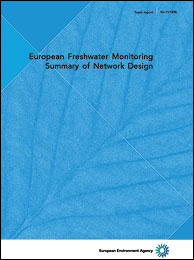All official European Union website addresses are in the europa.eu domain.
See all EU institutions and bodiesTopic report 11/1996
EN PDF: GH-01-96-761-EN-C - ISBN: 92-9167-024-3
All official European Union website addresses are in the europa.eu domain.
See all EU institutions and bodiesTopic report 11/1996
Report (PDF)

European Freshwater Monitoring, Summary of Network Design
Topic report 11/1996
12 Jul 1997
EN PDF: GH-01-96-761-EN-C - ISBN: 92-9167-024-3